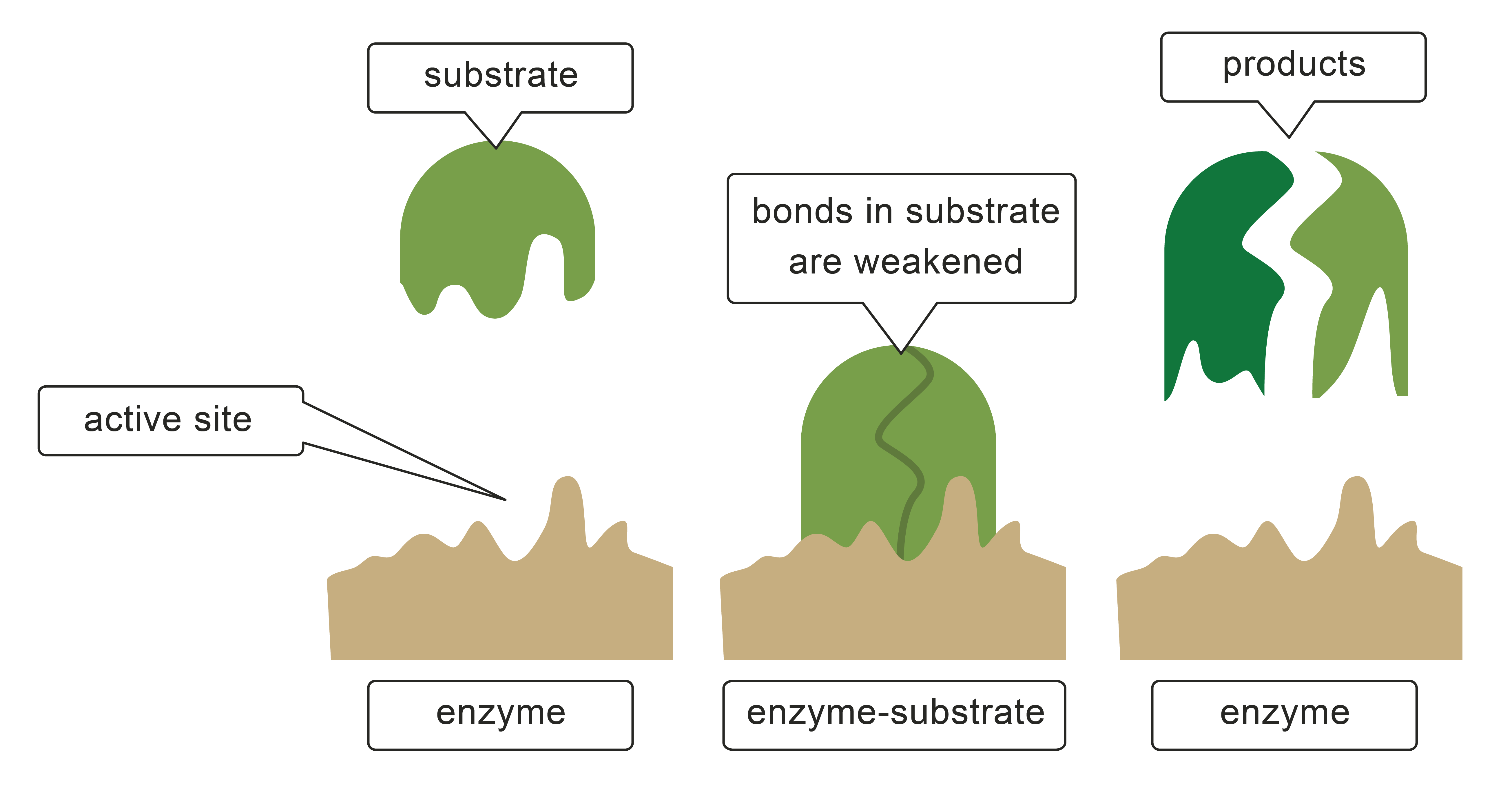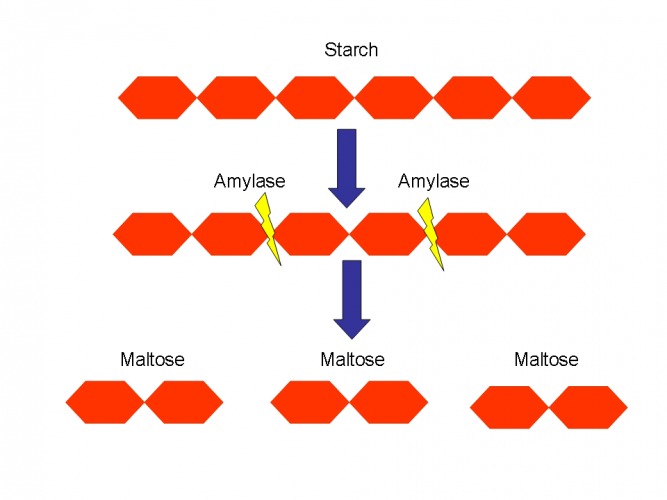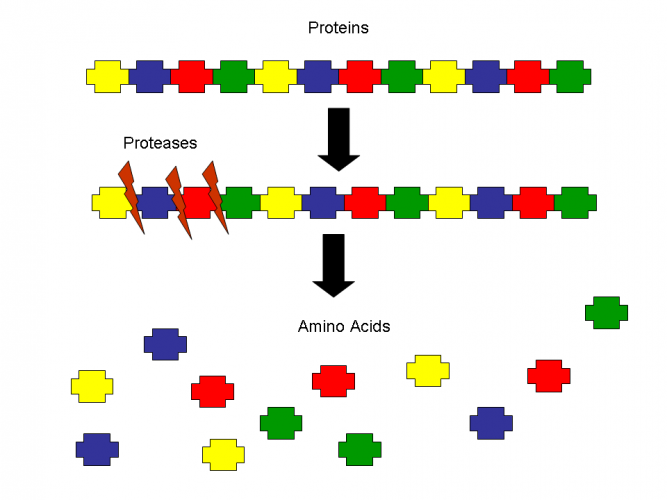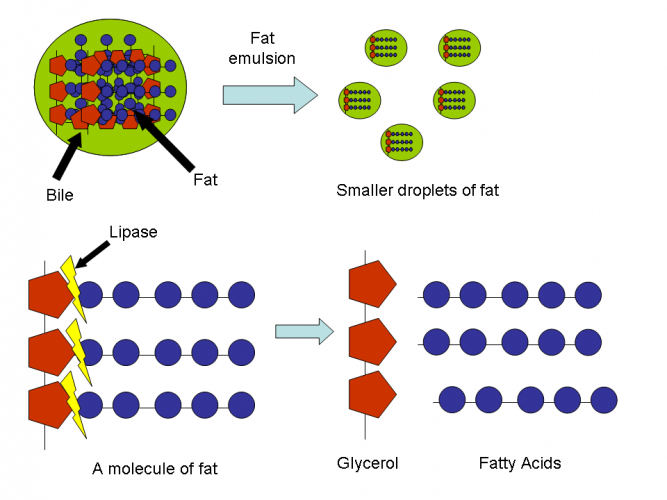Did you know that our saliva contains something called enzymes? And did you know that, without these enzymes, digestion wouldn't be able to occur? So, what are these enzymes and how do we use them in digestion?
Enzymes are proteins. They are biological catalysts that speed up a chemical reaction without being used up in the reaction. Enzymes have a specific shape that allows molecules to fit into the active site. It's here that large insoluble food substances are broken into smaller soluble molecules. Smaller molecules are easily absorbed by the blood. These smaller molecules might be used for different processes, for example, glucose can be used for respiration. Some smaller molecules will be used to build and make new products. Proteins can be broken down into amino acids, which can be reassembled into new proteins.
The lock and key theory
The shape of the active site of an enzyme matches the shape of the food molecule (substrate). A bit like a key is specific to the lock it opens, a substrate will only match a specific enzyme. This is called the lock and key theory.

Different types of food are broken down by different enzymes. Digestive enzymes are classified by the type of food that they affect; there are three main types:
Carbohydrase: breaks carbohydrate into smaller sugars
Protease: breaks protein into amino acids
Lipase: breaks fat into fatty acids and glycerol
Carbohydrates
Carbohydrates are chains of identical sugar molecules. The digestive enzyme called carbohydrase breaks the chemical bonds between the sugar molecules in each carbohydrate chain. An example is amylase. Amylase is found in saliva and pancreatic juices, and breaks starch down into small sugar molecules called maltose.

Proteins
Proteins are made up of amino acids. There are over 20 different types of amino acids. Proteins are digested by digestive enzymes called proteases. These enzymes break proteins into smaller amino acids and are found in the stomach, pancreas and small intestine.

Fats
Fats are digested in two stages:
Firstly, bile (made by the liver) allows the fat to ‘mix’ with water by breaking the fat into smaller droplets (emulsion).
Secondly, the digestive enzyme lipase breaks each fat molecule into the smaller glycerol and fatty acid molecules. These can now be absorbed by the blood. Lipases are found in the pancreas and small intestine.

In the following activity, you will describe the different enzymes that make up the digestive system.
Want a bit more help with this before you begin? Why not watch this short video?








